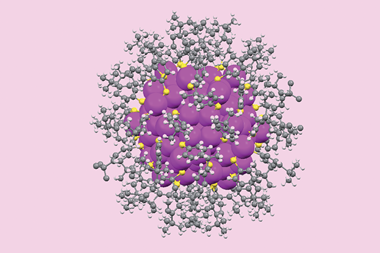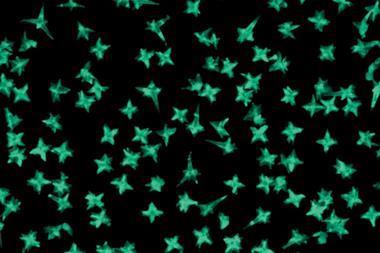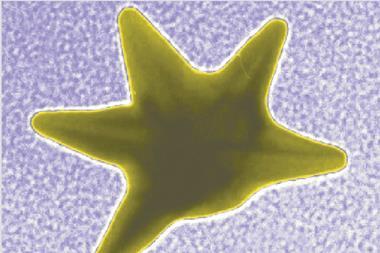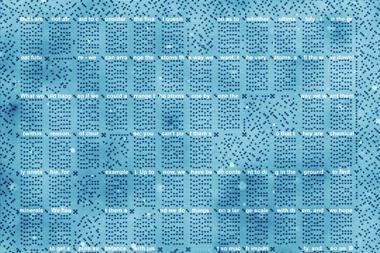Gold nanocluster superstructures have potential applications in bio-imaging

A new way of linking up gold nanoparticles has let chemists produce superstructures that resemble a string of pearls. These sorts of nanoparticle assemblies and superstructures have surprising electromagnetic properties and could be used to enhance chemical detectors, biomedical imaging or spectroscopy.
To prepare these superstructures, the Finnish team first followed a well-worn path to prepare gold nanoclusters. The innovation came when linking the ‘pearls’ together. To do so, the group made use of ligand–exchange reactions that yields superstructures in a highly controlled manner. This strategy has led to production of monolayer protected nanoclusters with homogeneous shapes, sizes and surface structures for the first time.
The team managed to purify up to four different types of superstructure. These gold nano-necklaces feature one, two, three and even four nanoparticle clusters covalently joined by biphenyl dithiol linkers. Molecular dynamics simulations suggest that the stability of these structures is dependent on the length of the connecting chains: the longer the chain, the smaller the repulsion between the clusters.
The authors were also able to obtain clear images of monomers, dimers and even trimers using transmission electron microscopy.
References
This article is free to access until 07 November 2016
T Lahtinen et al, Nanoscale, 2016, DOI: 10.1039/c6nr05267c

















No comments yet